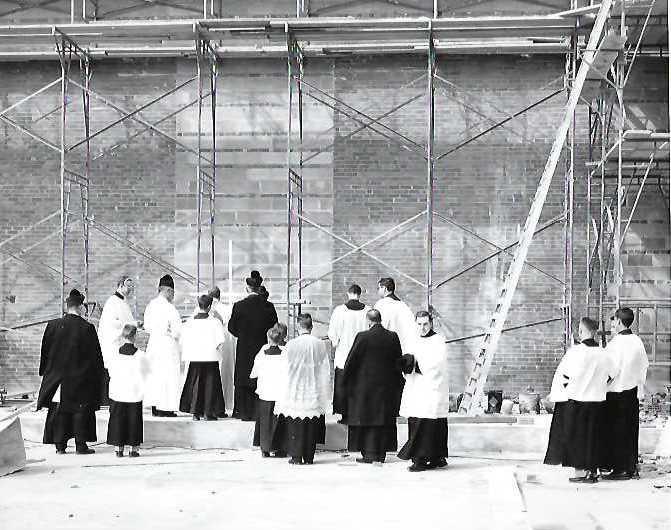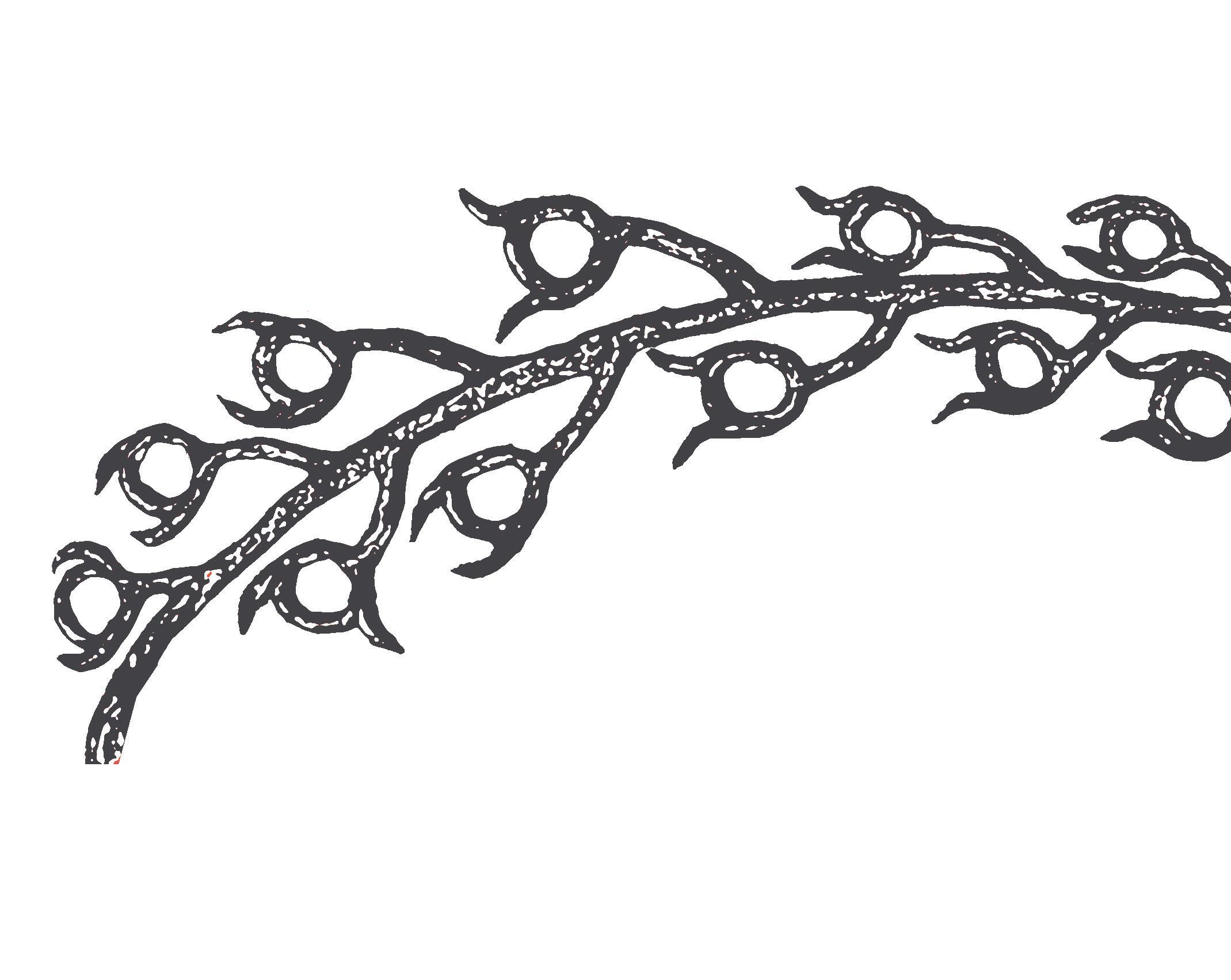
8 minute read
Chapter 1 :: 1947-1963
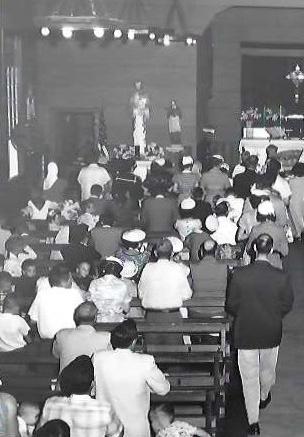
In 1947, the Saint Charles Borromeo Campus neighborhood looked very different than it does today. The bucolic farmland was dotted with a few farms and houses. Today’s bustling North Oak Street Trafficway was then highway 169, since relocated about a mile to the west, and was a road that connected downtown Kansas City and the little town of North Kansas City with the northern reaches of Clay County.
Advertisement
Together with Antioch Road, this was a main thoroughfare providing a road around which were a few businesses that supported the community of Linden, now Gladstone. Connecting Antioch Road and North Oak Trafficway was Shady Lane Drive, described in earlier lore about our neighborhood as a ‘path’ with seven or eight houses and pastureland (attributed to Lorraine Nixon, resident). The Second World War was finally over, and thousands of veterans were returning home to start their lives. The GI Bill provided low-interest home loans to returning soldiers and demand for new post-war goods and services fueled the economy. The area north of the river was ripe with opportunity and ready for development. At this time, this part of Missouri was within the Diocese of Saint Joseph, some years later to be combined with the Diocese of Kansas City to become what is today the Diocese of Kansas City–Saint Joseph.
Monsignor Maurice Wogan, Founding Pastor
Among those returning veterans was Maurice Wogan, born in Easton, Missouri in 1895. He earned a teaching certificate from the Northwest Missouri Normal School, now Northwest Missouri State University, in 1914 at age 19. After graduation he taught for four years in Buchanan County school system. He was in his early 20’s when World War I broke out and he joined the Navy as a radio electrician. After the war he went to Creighton University in Omaha, then to Kenrick Seminary in Saint Louis in 1921. He was ordained a priest in 1927 to serve in the Diocese of Saint Joseph, Missouri. As World War II was declared, he again enlisted, this time in the Army, where he was attached to the ground forces in the South Pacific for five years and discharged as a Major from the Army Chaplain Corps.
The seed landed on the clay soil
School children
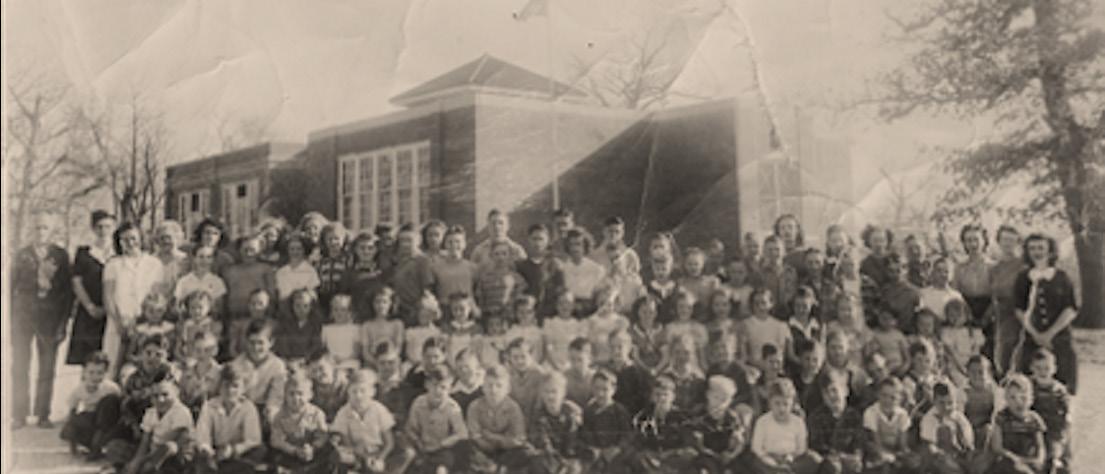
Returning from the war, Father Maurice Wogan, now in his early 50’s, was searching for his next challenge. He sought the counsel of his Bishop, Charles LeBlond of the Diocese of Saint Joseph, and was told there were no openings within the Diocese, but to consider starting a new parish in the area north of the Missouri River between Kansas City and Saint Joseph. There were already two Catholic parishes in the area, Saint Patrick in North Kansas City and Saint James in Liberty. He would need a census of Catholics in residence in the area to see if there were enough to support a new parish. Father Wogan was a determined individual, inclined to follow orders and moved to action. With his friend Harold Jones and Father Mallen, a priest from Liberty, he drove from Vivion Road north to Smithville and surveyed east and west to determine the number of Catholic residents. They found some 1,200 households, eighty-five were Catholic households (or 65 depending on the source) attending Mass in Liberty, North Kansas City, Weston and Kansas City, Kansas.
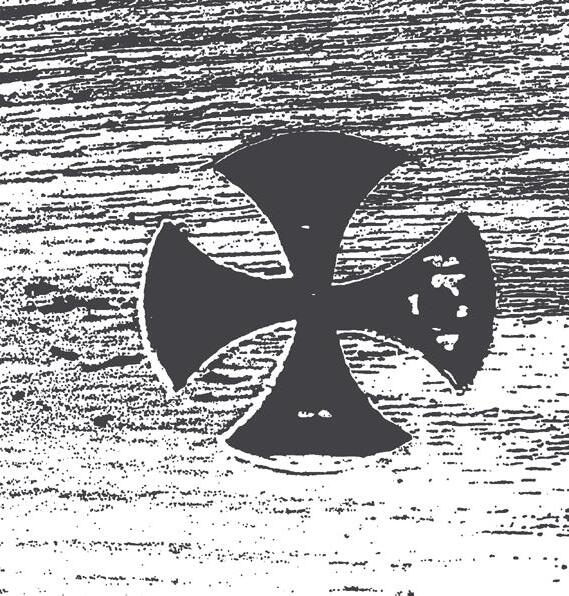
Building the Parish, Constructing the Church
Father Wogan had a clear vision for the future – to build a church with a school. With a newly secured bank loan, The Kansas City Star reported that he purchased 5 acres of pastureland in February 1947 on Shady Lane Drive from Michael F. and Margaret L. Lynch, followed by an additional 4 acres on June 16, 1950, resulting in the 9-acre site the parish occupies today. The first Mass was celebrated with a congregation of 40 in the Englewood Public School about a mile south of the new parish site, on Easter Sunday, April 6, 1947. Later Masses were held at Shady Lane Inn/Restaurant on Highway 169 (now North Oak Trafficway) in Linden (now Gladstone), Missouri.
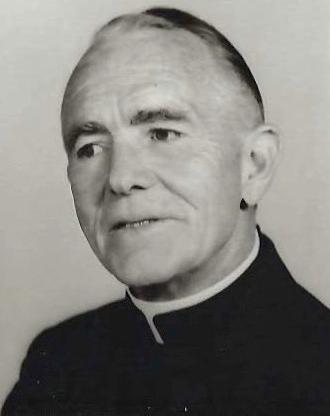
The Chapel
In April of that year, Father Wogan, through his Army contacts, purchased a 2-story surplus Army chapel from Coffeyville, KS, disassembled and reassembled it on the new church property on Shady Lane. The 75’ x 50’ building was located on the site at the east end of what is now The Commons and school office. The final cost of the new church including furnishings was close to $40,000. At midnight Christmas Eve, December 24, 1947, the first Mass was celebrated in the white-frame chapel at 704 NE Shady Lane. The 17-voice choir directed by Byron Bales was accompanied by 12-yearold Bernadette Tiedtka, church organist. Miss Tiedtka was later recognized by the Pope. Due to the inclement weather, tons of gravel were brought in for the parking area, while horses still grazed in the area now occupied by the rectory. Just a year after the land was purchased, on February 14, 1948, the chapel building was dedicated and named in honor of Bishop Charles LeBlond.
The Rectory
In those early days, Father Wogan lived above the meat market on the site of what is current day Vienna Square at North Oak Trafficway and Shady Lane Drive, and later in the south end of the first floor of the chapel. In April 1949, work began on the rectory, constructing what is now the center section of the building. Father moved into the new rectory in August of that year. That same summer, the first floor of the church was renovated into three classrooms. In September, three Sisters of Charity of Leavenworth moved into the pastor’s former quarters and opened the school with 45 students enrolled in 6 grades.
The Convent
With the additional 4-acres of land purchased in June 1950, on January 21, 1951, ground was broken for a new convent on the east side of the property. The building was completed in August of that year with five teaching Sisters of Charity moving into the new convent.


The School
Still only three and a half years old, the parish was growing and the vision of a church with a school was realized. That September of 1951 there were 120 children enrolled in the school. May 29, 1952, was the first graduation from the school, with 8 students completing the 8th grade. In June of that year, construction started on a new school building, what is now the first floor and basement of the current east wing of the Borromeo Academy. On March 22, 1953, the new school building was completed and dedicated. In March 1953 there were 300 families in the church and 170 children in the school. At 7:30 Mass on October 31, 1954, 65 parish children made their First Communion. Earlier that year the parish celebrated ten graduates from the school.
The Church
On September 4, 1955, ground was broken for the present-day church with the cornerstone laid on March 11, 1956. The Solemn Dedication of Saint Charles Church was celebrated on September 3, 1956. On October 28, 1956, at the Solemn Pontifical Mass and Benediction, an authentic relic of Saint Charles Borromeo was carried in procession before the Mass and venerated at the altar, and the parish was formally named for our patron, Saint Charles Borromeo. The new church was constructed of colonial brick and Carthage limestone. By this time there were 650 parish families, 3 priests, 8 sisters, and 500 children in the school. New municipal boundaries had been established for the growing communities around the church. The boundary between the City of Gladstone on the north and the Village of Oakview on the south runs through the sanctuary. At this same time, additions were made to the convent and rectory.
The Parish Matures
The parish of Saint Charles Borromeo, now in the center of growth and development of the communities of the Oak Villages and Gladstone, was thriving. The parish continued to grow spiritually, physically, and socially and had matured through worship, education, and outreach.
Through this period, Saint Charles Borromeo was the center of community life for Northland Catholics. Activities included fundraising and social outreach for many causes, holiday events and parties, outings to Starlight Theater and Fairyland Park, support for the Saint Anthony’s Children’s home, bazaars, guest speakers, dances, and trips to see the Shrine Circus. A vibrant community, there was always something to do with and for the community of Saint Charles - luncheons, bake sales, doll sale, card and stationary sales, carnivals with Ferris wheel, politicians and their speeches, new car raffle fundraiser, and spaghetti dinners.
Many ministries, societies and guilds for adults and youth were established to support the new church including the Holy Name Society, Altar Society, School Building Society, Knights of Columbus Tri-County Council 3414, Catholic Youth Council, Girl Scouts and Campfire Girls. Under the leadership of Monsignor Wogan and Bill Spiegelhalter, Saint Charles Cub Scout Pack and Scout Troop 180 were established. The School Guild was established which provided a pantry shower for the Sisters, the hot lunch program, the book-rental system, the school health program, annual school picnic, and other money raising projects for school needs. Children who did not attend the parish school were supported by activities such as the 2-week Summer Vacation School.
The original wood-frame chapel relocated from Coffeyville, Kansas had become obsolete and on May 16, 1957, the Knights of Columbus of the Tri-County Council completed removal of the old Saint Charles Church. The building was given to the Knights for reconstruction on their ground on Old Pike Road.
On July 21, 1957, a $156,000 expansion to the school and convent was underway. The school included a new L-shaped main wing with annex to include 6 new classrooms to accommodate the 640-650 pupils that were anticipated to attend in the fall. The convent expansion included five 5 new bedrooms and bath facilities, a second floor, office, dining room, community room on first floor, chapel, sacristy, and storage on the garden level.
Another sign of the maturing parish was strong support for vocations to the priesthood. On April 6, 1957, Alfred O’Laughlin became the first parishioner to be ordained to the priesthood. He celebrated his first Mass on April 7, 1957, at Saint Charles.
In 1959 the western boundary of the parish was again modified. Everything west of the Clay-Platte County line went to Saint Therese Parish in Parkville and the southern boundary became Englewood Road with the area south of Englewood transferring to Saint Patrick’s parish.
In May 1960, school cafeteria service was discontinued so the space could be converted to classrooms. That summer, two school rooms were arranged on the east side of the school basement to accommodate growth.
The End of an Era
In recognition for his leadership and contributions, in December 1957, in an investiture ceremony at the Cathedral of the Immaculate Conception, Father Wogan became Monsignor Wogan. Monsignor Wogan, the parish founder, retired as pastor in 1963 but did not end his service to the community. He retired to the rectory, continued to say Mass, did baptisms, and worked alongside the new pastor, Father James Lyons. In 1972, Monsignor Wogan was honored by the City of Gladstone for his 25 years of service to the community. A proclamation and key to the city was presented to him by Kansas City Mayor Richard Davis. On October 24, 1972, Monsignor Wogan said Mass in the morning, laid down afterward to rest in the rectory and died. He was 77.
Monsignor Maurice Francis Wogan was described as a visionary, and by those who knew him as “kind to children; thoughtful of the large families; …and seemed to have a fatherly or grandfatherly way about him”. He was a hands-on person, involved in all facets of the parish, knew all the families by name and was very supportive of the Sisters of Charity, always making sure that they were cared for. He was a life-long outdoorsman who like hunting and fishing, and golf.
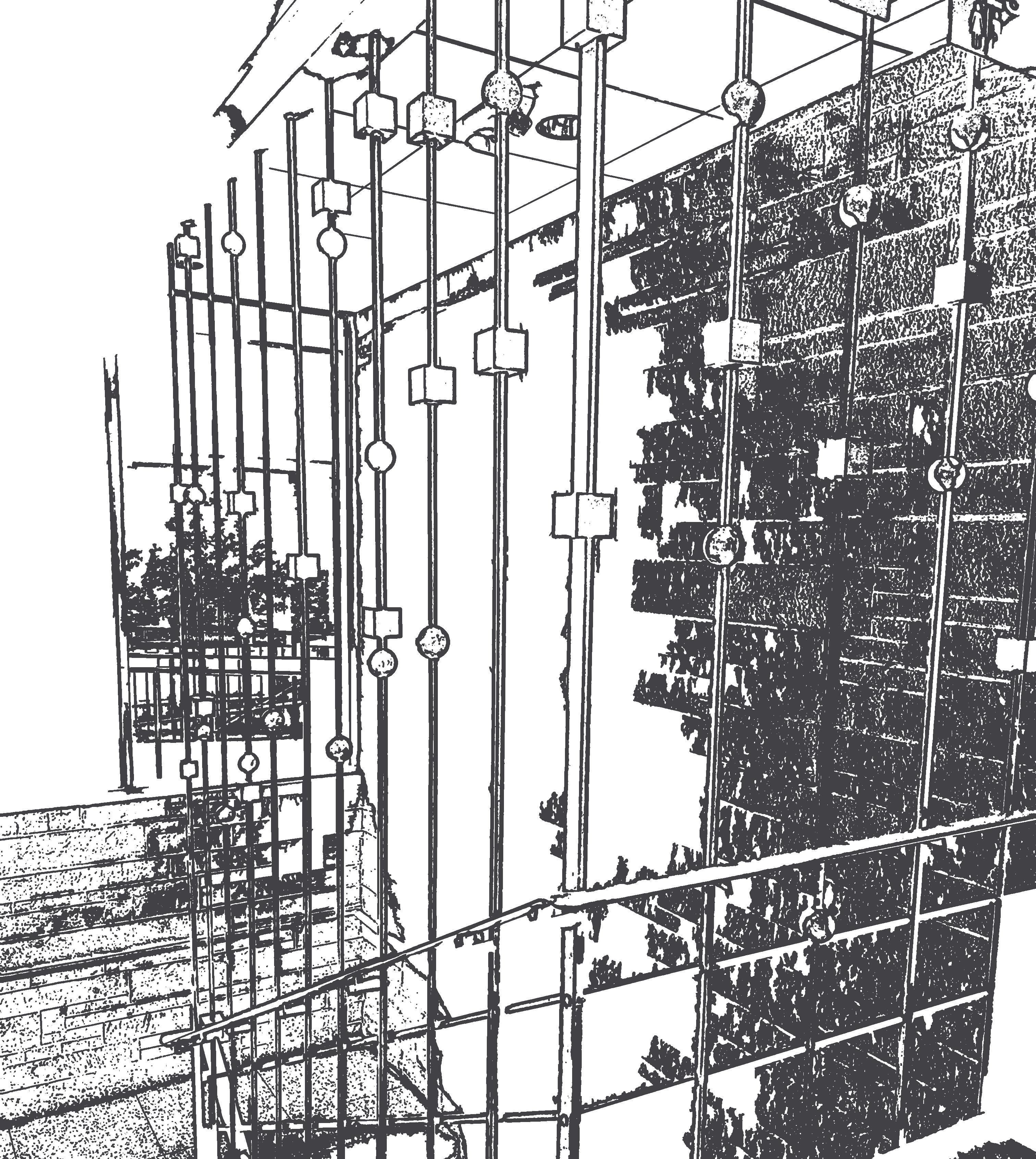
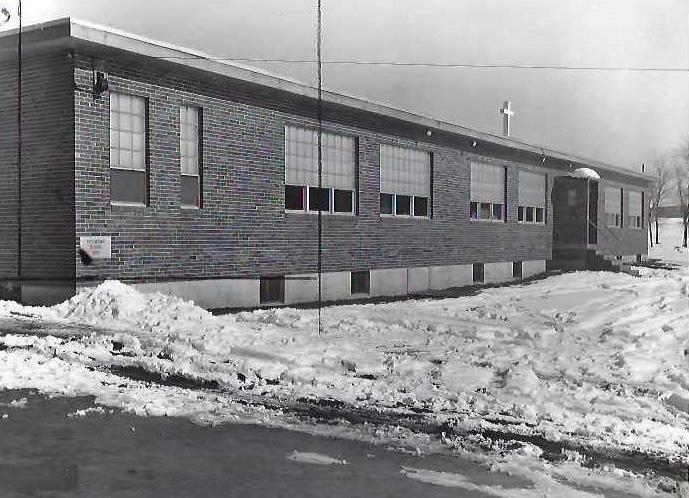
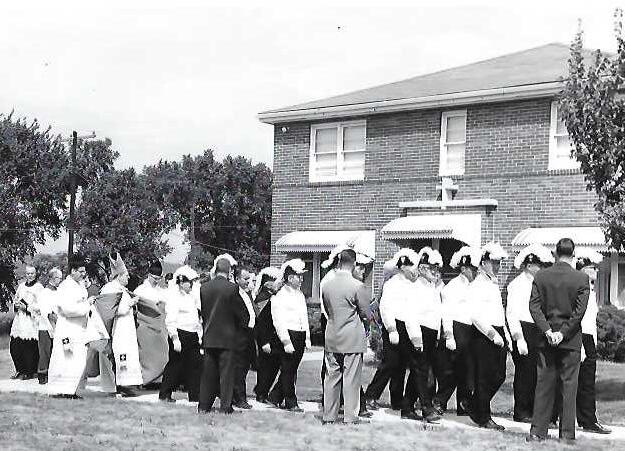


At his death, Monsignor Wogan was described in The Kansas City Star as being “a man of great faith and perseverance, a humble man, a hardworking and true servant of the Lord, but most of all he was a friend to everyone. He had time for the slightest detail. He loved children and they loved him. He loved life and always had a pleasant word…” “One of his greatest pleasures was a round of golf, and since his retirement, you would always see him with his friends on the course about 10 each morning.” Father Lyons said that he played golf with Monsignor the day before he passed away and he is sure this is the way Monsignor wanted it.
